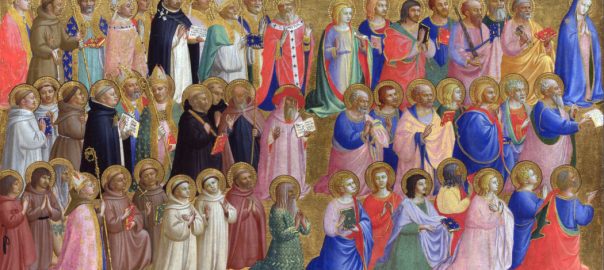What is a Saint?
In the Catholic Church, the saints are ordinary people like you and me who made it to heaven. They’ve done nothing that you and I cannot do, if we persevere in following Jesus Christ and living our lives according to His teaching.
Catholic devotion to the saints is nothing more than respect and admiration for the memory of the deceased heroes of the Church. We honor them as men and women of heroic virtue who can serve as our role models. They were no more perfect than are we; but, at the end of their lives – and hopefully, ours – they received from Our Lord his words, “Well done, good and faithful servant.”
We also ask the saints to intercede for us. Have you ever asked anyone to pray for you when you were having a hard time? That is how Catholics “pray to” the saints – we pray with saints, not to them. As the Letter of James says, “The fervent prayer of a righteous person is very powerful.”
Well-known saints like those below often are remembered in a special way on particular days during the year.
January – February – March – April – May – June
July – August – September – October – November – December
This Weeks Saints
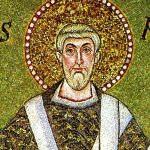
July 20
St Apollinaris of Ravenna
___
15th Sunday in Ordinary Time
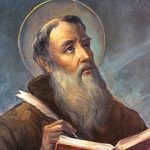
July 21
St. Lawrence of Brindisi
___
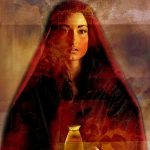
July 22
St. Mary Magdalene
___
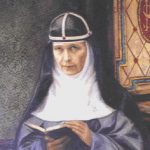
July 23
St. Bridget of Sweden
___

July 24
St. Charbel Makhlouf
___

July 25
St. James
___
Independence Day
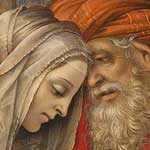
July 26
SS. Anne and Joachim
__
July 22
St. Mary Magdalene

Mary of Magdala was neither a prostitute nor – certainly not – the wife of the Lord. She was simply the woman possessed by seven demons who was rescued by Jesus and who followed him faithfully for the rest of her life. Angels were the messengers of the Incarnation; God granted this woman, one of us, to be the messenger of the Resurrection. She followed Him during His ministry, to the cross and to the empty tomb: She has always been the example of great love and great forgiveness, one of those close to Jesus who grasped the truth of God’s love for human beings and spent her life bearing witness to that love.
July 26
Sts. Anne and Joachim
In the Scriptures, Matthew and Luke provide a legal family history of Jesus, tracing his ancestry from his adoptive father Joseph back to Adam, to show that Jesus is the culmination of the history of our salvation. But his mother’s family is neglected; even the names “Joachim” and “Anne” come from a source written more than a century after Jesus died. Information concerning these parents of Mary is taken from apocryphal sources: The Gospel of the Nativity of Mary, the Gospel of PseudoMatthew, and the Protoevangelium of James. Whether we rely on the traditions about Mary’s childhood or make guesses from the information in the Bible, we see in her a fulfillment of many generations of prayerful persons, herself steeped in the religious traditions of her people.
Anne was the wife of St. Joachim. St. Anne became popular in the Roman Church in the thirteenth century, having been venerated in the Eastern Church since earliest times. Anne and Joachim had been married for a long time without children. Both prayed for an end to their barrenness, and an angel appeared to Joachim and to Anne, while he was away, telling them that she was pregnant. The angel also told Anne that the fruit of her womb “shall be blessed by all the world.”
Many legends have flourished about Anne and Joachim, but little is known about their lives. Veneration of Anne has been constant throughout the history of the Church, particularly in Constantinople. There she was included in the calendar, one of the oldest documents of Christendom. Her feast was instituted in the Roman calendar in 1481 by Pope Sixtus IV and universally by Pope Gregory XIII. In 1969 the feast day of St Joachim and the feast day of St Anne were joined together to be celebrated on July 26 as the feast of Saints Joachim and Anne.
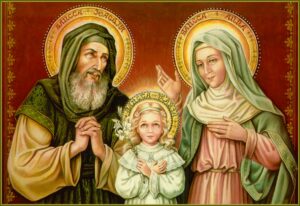
St. Anne is a patron saint of mothers, grandmothers, nursemaids, and women in labor; and of Naples and Florence
St. Joachim is a patron of fathers and grandfathers.
“O blessed couple, all the world is indebted to you, for it is by your means that it can offer to its Creator the most excellent gift possible, her who is worthy to be Mother of his only son.”
St. John Damascene

